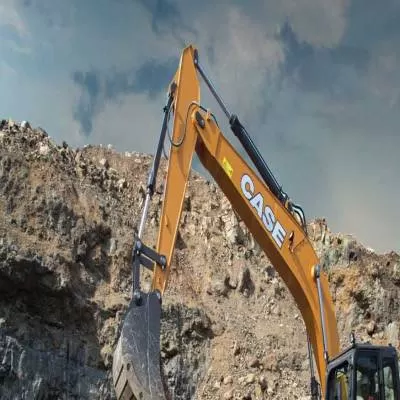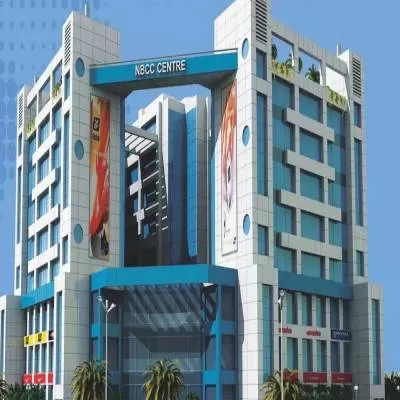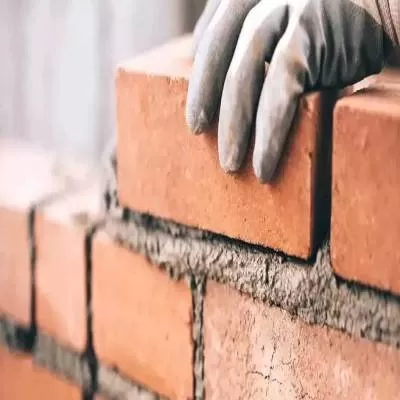- Home
- Building Material
- Cement
- Up for an Upswing

Up for an Upswing
Infrastructure, a sunrise sector not long ago, has witnessed many hiccups in the past few years. Various factors, such as a slower reforms process, lower IIP growth, higher inflation leading to a higher interest rate regime and the higher cost of financing leading to slower capex, have severely affected the performance of infrastructure companies. Adding to the woes was an unfavourable global macroeconomic situation. In this scenario, concerns on loan repayment default, cash crunch and an overall rethink by lending agencies landed this once-emerging sector into trouble. In fact, the impact of these factors was such that most infrastructure stocks lost almost 90 per cent of market capitalisation in a span of two years.
Looking back, it was a chain of events that led the sector to dire straits. When we speak of the infrastructure sector, it includes many subsectors, such as steel, cement, paints, engineering companies, construction and contracting companies, and even equipment companies. Let us now examine the factors that derailed the sector in detail.
Slower GDP growth:
Basic worry
Infrastructure is highly correlated to the country´s GDP growth rate. As growth rate progresses, the sector automatically enters a fast lane and vice-a-versa. In the past few years, India witnessed a slower growth on account of policy paralysis.
As GDP growth declined, it eventually led to slower capex and a vicious cycle of higher inflation on account of supply constraints and, eventually, higher interest rates.
Rising inflation and higher interest cost
Here lies the real reason behind the dismal show of all infra-related companies. As interest costs remained higher, most projects eventually turned financially unviable, many private orders declined and public projects also got stalled owing to the Government´s indecision. Companies that had taken loans could not pay them back as cash flows reduced. And as these companies were already debt-laden, infra being so capital-intensive, they could not borrow additional funds. The scenario turned so bad that some companies had to sell off non-core assets and, in some cases, even running projects. While topline was affected on account of slower order book growth, factors like higher interest cost, severe competition and rising raw material cost affected the bottomline.
As new orders declined, there was severe competition among existing players for the contracts that were awarded. The overcrowding resulted in aggressive bidding for contracts even at lower margins.
Each sector related to infrastructure witnessed these issues. The realty sector faced slower off-take in volume on account of higher mortgage rates and higher debt burdens; the cement sector faced supply overhang. As realty sales volume was down, the paints segment also faced worries on the volume front. And with so many projects stalled, demand for steel declined, leading to a drop in prices.
However, even in this scenario full of adversity, many companies managed to swim against the tide and post a strong financial performance. In this edition, CW has attempted to recognise such winners. Moving forward, here´s a take on what to expect in the future.
The way ahead
After remaining in the doldrums for over three years, the infrastructure sector appears to be on the cusp of change. Early indications are visible. First and foremost is the change of guard at the Centre. BJP governments have always been pro-growth and focused on infrastructure. In the past, larger infrastructure projects like the Golden Quadrilateral, ultra mega power plants and even airport and ports projects were initiated by a BJP government.
In its first few days in office, the Narendra Modi-led Government has provided a clear road map for recovery. As a result, many research firms have increased GDP growth targets for India - from the current level of 4.8 per cent, they predict that growth is likely to touch over 6.5 per cent in FY15-FY16.
Inflation and interest rate worries to recede
Apart from increased GDP growth, the infrastructure sector is likely to get other advantages in the form of contraction in inflation and reduction of interest rates. If inflation remains under the tolerance levels of RBI, there is a possibility of the RBI going ahead with a cut in repo rates. And as interest rates witness a decline, many stalled projects would start rolling again.
There is great hope that the new Government will expedite development and speed up execution cycles. This can lead to long-term financing, easier approval and clearance processes and better profitability for infrastructure companies. Over the next few years, the key focus areas in infrastructure at the national level will have to be energy (exploration, generation, transmission, distribution) and connectivity (roads, railways, airports, ports and Internet). The development agenda of the new Government is expected to remove existing bottlenecks and create an enabling business environment.
Order book getting traction
Many infrastructure companies have already started to witness traction on the order book front. To put the figures in perspective, L&T, the largest construction company in India, saw its order book growing 13 per cent in FY14 to reach the level of Rs 169,952 crore, as on March 31, 2014. Further, the order inflow target of more than 20 per cent for FY15 clearly indicates optimism about growth. Not only L&T, even other infra companies have managed to post double-digit growth in the order book. As of March 31, 2014, the order book of HCC stands at Rs 14,249 crore, IVRCL at Rs 23,700 crore, NCC at Rs 20,956 crore and IRB Infrastructure at Rs 10,000 crore. The swelling order books are indicative of optimism coming back to the sector.
As the order books of infrastructure companies start getting traction, related sectors like cement, steel and construction equipment are also likely to witness revival. Further, the realty segment is expected to bounce back as mortgage rates decline. So, the whole cycle is likely to revive - get set for better days ahead!
The infrastructure sector can never be out of the reckoning as it is intrinsic to economic growth. As the concluding part of this Cover Story, CW offers an analytical perspective of the recent past and - more important - the way ahead. Infrastructure, a sunrise sector not long ago, has witnessed many hiccups in the past few years. Various factors, such as a slower reforms process, lower IIP growth, higher inflation leading to a higher interest rate regime and the higher cost of financing leading to slower capex, have severely affected the performance of infrastructure companies. Adding to the woes was an unfavourable global macroeconomic situation. In this scenario, concerns on loan repayment default, cash crunch and an overall rethink by lending agencies landed this once-emerging sector into trouble. In fact, the impact of these factors was such that most infrastructure stocks lost almost 90 per cent of market capitalisation in a span of two years. Looking back, it was a chain of events that led the sector to dire straits. When we speak of the infrastructure sector, it includes many subsectors, such as steel, cement, paints, engineering companies, construction and contracting companies, and even equipment companies. Let us now examine the factors that derailed the sector in detail. Slower GDP growth: Basic worry Infrastructure is highly correlated to the country´s GDP growth rate. As growth rate progresses, the sector automatically enters a fast lane and vice-a-versa. In the past few years, India witnessed a slower growth on account of policy paralysis. As GDP growth declined, it eventually led to slower capex and a vicious cycle of higher inflation on account of supply constraints and, eventually, higher interest rates. Rising inflation and higher interest cost Here lies the real reason behind the dismal show of all infra-related companies. As interest costs remained higher, most projects eventually turned financially unviable, many private orders declined and public projects also got stalled owing to the Government´s indecision. Companies that had taken loans could not pay them back as cash flows reduced. And as these companies were already debt-laden, infra being so capital-intensive, they could not borrow additional funds. The scenario turned so bad that some companies had to sell off non-core assets and, in some cases, even running projects. While topline was affected on account of slower order book growth, factors like higher interest cost, severe competition and rising raw material cost affected the bottomline. As new orders declined, there was severe competition among existing players for the contracts that were awarded. The overcrowding resulted in aggressive bidding for contracts even at lower margins. Each sector related to infrastructure witnessed these issues. The realty sector faced slower off-take in volume on account of higher mortgage rates and higher debt burdens; the cement sector faced supply overhang. As realty sales volume was down, the paints segment also faced worries on the volume front. And with so many projects stalled, demand for steel declined, leading to a drop in prices. However, even in this scenario full of adversity, many companies managed to swim against the tide and post a strong financial performance. In this edition, CW has attempted to recognise such winners. Moving forward, here´s a take on what to expect in the future. The way ahead After remaining in the doldrums for over three years, the infrastructure sector appears to be on the cusp of change. Early indications are visible. First and foremost is the change of guard at the Centre. BJP governments have always been pro-growth and focused on infrastructure. In the past, larger infrastructure projects like the Golden Quadrilateral, ultra mega power plants and even airport and ports projects were initiated by a BJP government. In its first few days in office, the Narendra Modi-led Government has provided a clear road map for recovery. As a result, many research firms have increased GDP growth targets for India - from the current level of 4.8 per cent, they predict that growth is likely to touch over 6.5 per cent in FY15-FY16. Inflation and interest rate worries to recede Apart from increased GDP growth, the infrastructure sector is likely to get other advantages in the form of contraction in inflation and reduction of interest rates. If inflation remains under the tolerance levels of RBI, there is a possibility of the RBI going ahead with a cut in repo rates. And as interest rates witness a decline, many stalled projects would start rolling again. There is great hope that the new Government will expedite development and speed up execution cycles. This can lead to long-term financing, easier approval and clearance processes and better profitability for infrastructure companies. Over the next few years, the key focus areas in infrastructure at the national level will have to be energy (exploration, generation, transmission, distribution) and connectivity (roads, railways, airports, ports and Internet). The development agenda of the new Government is expected to remove existing bottlenecks and create an enabling business environment. Order book getting traction Many infrastructure companies have already started to witness traction on the order book front. To put the figures in perspective, L&T, the largest construction company in India, saw its order book growing 13 per cent in FY14 to reach the level of Rs 169,952 crore, as on March 31, 2014. Further, the order inflow target of more than 20 per cent for FY15 clearly indicates optimism about growth. Not only L&T, even other infra companies have managed to post double-digit growth in the order book. As of March 31, 2014, the order book of HCC stands at Rs 14,249 crore, IVRCL at Rs 23,700 crore, NCC at Rs 20,956 crore and IRB Infrastructure at Rs 10,000 crore. The swelling order books are indicative of optimism coming back to the sector. As the order books of infrastructure companies start getting traction, related sectors like cement, steel and construction equipment are also likely to witness revival. Further, the realty segment is expected to bounce back as mortgage rates decline. So, the whole cycle is likely to revive - get set for better days ahead!























